Workshop Speakers
Leonida Fusani
- Biographical Note
-
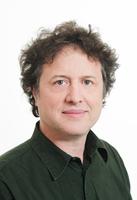
Leonida Fusani is Professor of Animal Physiology and Ornithology at the University of Vienna and the University of Veterinary Medicine, Vienna.
After graduating in Music with a M.A. in Pianoforte at the Conservatorio Cherubini in Florence, his birthplace, he decided to become a biologist and completed his studies in Cambridge with a PhD in Behavioural Neuroendocrinology. After postdoctoral work at the Max Planck Institute for Ornithology in Seewiesen and at the University of California, Los Angeles, he returned to Italy to take up faculty positions, first in Siena and then in Ferrara, until moving to Vienna in 2014. His research focuses on the evolutionary mechanisms that underlie complex animal behaviour, such as bird migration and the elaborate courtship displays of many bird species.
In 2007 he received the Frank A. Beach Award of the Society of Behavioral Neuroendocrinology for his innovative approach in bridging neurosciences and behavioural ecology. He is Editor of Ethology and Journal of Ornithology. He has been conducting fieldwork in Africa, Asia and the Americas and is a member of the Advisory Board of the National Geographic Global Exploration Fund - Northern Europe.
- Title
- Leks, peacocks, and the need for an evolutionary concept of aesthetics
- Web Site
Vittorio Gallese
- Biographical Note
-
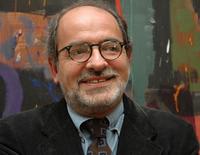
Vittorio Gallese is Professor of Physiology at the Department of Neuroscience of the University of Parma, Italy, Professor in Experimental Aesthetics at the School of Advanced Study of the University of London, U.K. and Adjunct Senior Research Scholar, Dept. of Art History and Archeology, Columbia University, New York, USA.
He is Coordinator of the PhD Program in Neuroscience and Director of the Doctoral School of Medicine at the University of Parma. Cognitive neuroscientist, his major contribution is the discovery, together with his colleagues of Parma, of mirror neurons and the elaboration of a theoretical model of perception and social cognition – Embodied Simulation Theory. He is the author of more than 200 scientific publications in peer-reviewed international scientific journals and edited books. He recently co-authored with Massimo Ammaniti the book The Birth of Intersubjectivity: Psychodynamics, Neurobiology, and the Self. New York: Norton, 2014.
- Title
- Visions of the body: The problem of images and neuroscience
- Web Site
Anjan Chatterjee
- Biographical Note
-
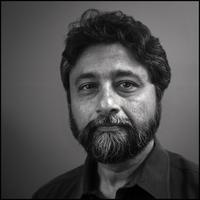
Anjan Chatterjee is the Frank A. and Gwladys H. Elliott Professor and Chair of Neurology at Pennsylvania Hospital. He is a member of the Center for Cognitive Neuroscience, and the Center for Neuroscience and Society at the University of Pennsylvania. He received his BA in Philosophy from Haverford College, MD from the University of Pennsylvania and completed his neurology residency at the University of Chicago. His clinical practice focuses on patients with cognitive disorders. His research addresses questions about spatial cognition and language, attention, neuroethics, and neuroaesthetics.
He wrote The Aesthetic Brain: How we evolved to desire beauty and enjoy art and co-edited: Neuroethics in Practice: Mind, medicine, and society, and The Roots of Cognitive Neuroscience: behavioral neurology and neuropsychology. He is or has been on the editorial boards of: American Journal of Bioethics: Neuroscience, Behavioural Neurology, Cognitive and Behavioral Neurology, Neuropsychology, Journal of Cognitive Neuroscience, Journal of Alzheimer’s Disease, Journal of the International Neuropsychological Society, European Neurology, Empirical Studies of the Arts, The Open Ethics Journal and Policy Studies in Ethics, Law and Technology.
He was awarded the 2002 Norman Geschwind Prize in Behavioral and Cognitive Neurology by the American Academy of Neurology and the 2016 Rudolph Arnheim Prize from the American Psychological Association. He is a founding member of the Board of Governors of the Neuroethics Society, the past President of the International Association of Empirical Aesthetics, and the past President of the Behavioral and Cognitive Neurology Society. He serves on the Boards of Haverford College, the Associated Services for the Blind and Visually Impaired, The College of Physicians of Philadelphia, and Universal Promise.
- Title
- Neural and evolutionary considerations in aesthetics
- Web Site
Michele Cometa
- Biographical Note
-

Michele Cometa is Professor of Comparative Literature and Visual Culture at the University of Palermo. He was a visiting professor at many European universities and recently received the Beinecke Fellowship at the Clark Art Institute (Williamstown) and a fellowship at the Italian Academy (Columbia University, New York) to work on the project “Emotion, Embodiment and the History of Art and Music: Aesthetics, History and Anthropology”.
His research focuses on German cultural history and aesthetics (especially in the age of Goethe), literary theory, and visual culture. Recent publications include works on ékphrasis, literature, and visual culture: Descrizione e desiderio. I quadri viventi di E. T. A. Hoffmann (2005); Vedere: Lo Sguardo di E. T. A. Hoffmann (2009); and La scrittura delle immagini. Letteratura e cultura visuale (2012). His book on the biological meaning of fiction (La letteratura necessaria. Narrazione e biologia) are in press.
- Title
- Bodies that matter: Miniaturization and the origins of art
- Web Site
Tecumseh Fitch
- Biographical Note
-
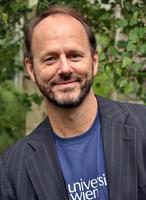
Tecumseh Fitch is Professor of Evolutionary Cognitive Biology at the University of Vienna. He studies bioacoustics and the evolution of cognition and communication in animals and man, focusing on the evolution of speech, music and language. He is interested in all aspects of pattern recognition and vocal communication in vertebrates.
Fitch was born in Boston, USA and after obtaining his Bachelors in biology (1985) he did his PhD in Cognitive and Linguistic Science (1994), both at Brown University. After a post-doc in Speech and Hearing Sciences at MIT/Harvard, Fitch was a lecturer at Harvard from 1999-2002, first in Biology and then Psychology. From 2003 - 2008 he taught at the University of St Andrews in Scotland (Reader, School of Psychology. In 2009 he moved to a permanent professorship in Vienna, where he co-founded the new Department of Cognitive Biology in the Faculty of Life Sciences. He is the recipient of an ERC Advanced Grant, and is a co-author of over 170 publications, one book, and one patent.
- Title
- BioAesthetics, Pattern Perception and the Aesthetic Trajectory
- Web Site
Tim Ingold
- Biographical Note
-
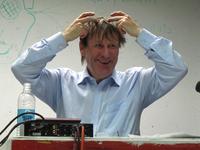
Tim Ingold is Chair of Social Anthropology at the University of Aberdeen. He has carried out fieldwork among Saami and Finnish people in Lapland, and has written on environment, technology and social organisation in the circumpolar North, on animals in human society, and on human ecology and evolutionary theory. His more recent work explores environmental perception and skilled practice.
Ingold’s current interests lie on the interface between anthropology, archaeology, art and architecture. His recent books include The Perception of the Environment (2000), Lines (2007), Being Alive (2011), Making (2013) and The Life of Lines (2015).
- Title
- On opening a path to beauty: Aesthetic attention and the perception of the real
- Web Site
Marcos Nadal
- Biographical Note
-
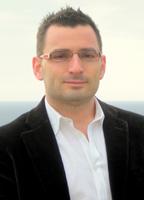
Marcos Nadal is Assistant Professor at the Department of Department of Psychology, University of the Balearic Islands. Marcos Nadal's main research has focused on the evolution, the neural correlates, and function of cognitive and affective processes involved in aesthetic preference and art appreciation.
He has authored over 70 book chapters and papers in peer-reviewed journals on these topics, and co-edited Art, Aesthetics and the Brain, published in 2015 by Oxford University Press. He is member of the Spanish Society for Evolutionary Biology, the International Association for Empirical Aesthetics, and Section 10 of the American Psychological Association: Psychology of Aesthetics, Creativity and the Arts. In 2014 he received the Alexander Gottlieb Baumgarten Award from the International Association of Empirical Aesthetics for his contributions to the field of empirical aesthetics.
- Title
- Front to back: neural underpinnings of aesthetic orientation and perceptual processing in aesthetic appreciation of artworks
- Web Site
Telmo Pievani
- Biographical Note
-
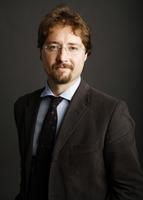
Telmo Pievani is Full Professor at the Department of Biology, University of Padua, where he covers the first Italian chair of Philosophy of Biological Sciences. He also teaches Anthropology and Bioethics. After Ph.D. researches in USA, he has been Professor of Philosophy of Science at the University of Milan Bicocca (2001-2012). He is Fellow of several academic Institutions and scientific societies, including the “Umberto Veronesi” Foundation for the Progress of Sciences and the Istituto Italiano di Antropologia. Since 2015, he is vice-President of the Italian Society of Evolutionary Biology. He is member of the editorial board of Evolution: Education and Outreach, Evolutionary Biology, and Le Scienze, Italian edition of Scientific American.
He has authored 196 publications, included several books. He has been fellow of the Scientific Board of Genoa Science Festival and since 2014 he is fellow of the International Scientific Council of the Museum of Sciences in Trento. He is Director of “Pikaia”, the Italian website dedicated to evolution (www.pikaia.eu). With Niles Eldredge and Ian Tattersall, he was the Curator of the Italian edition of the International exhibition “Darwin 1809-2009” (www.darwin2009.it). With Luigi Luca Cavalli Sforza he was Curator of the International exhibition “Homo sapiens. The Great History of Human Diversity”, hosted in Rome 2011-2012. In 2014 he curated the new permanent exhibitions of the “Garden of Biodiversity”, inside the historical Botanical Garden of Padua. He is a columnist for Il Corriere della Sera.
- Title
- Darwin and the evolution of aesthetics: a pluralistic methodology for the future
- Web Site
Andrea Pinotti
- Biographical Note
-
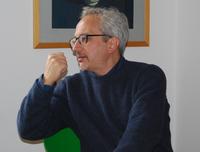
Andrea Pinotti is Associate Professor in Aesthetics at the Università degli Studi di Milano and Directeur de Programme at the Collège International de Philosophie in Paris on the programme “Monument Nonument. Politique de l'image mémorielle, esthétique de la mémoire matérielle”. His research topics are the psychological and phenomenological aesthetics, the “Kunstwissenschaft”, the image-theories and visual culture studies, the theories of empathy. He was fellow at the Italian Academy for Advanced Studies in America at Columbia University, Senior Fritz Saxl-Fellow at the Warburg Institute in London, Gastwissenschaftler at the ZfL in Berlin, visiting professor at the EHESS in Paris and at Université Jean-Moulin Lyon 3.
Among his publications the volumes: Il corpo dello stile. Storia dell’arte come storia dell’estetica a partire da Semper, Riegl, Wölfflin [The Body of Style. History of Art as History of Aesthetics, moving from Semper, Riegl, Wölfflin, 1998]; Memorie del neutro. Morfologia dell’immagine in Aby Warburg [Memories of the Neutral. Morphology of Image in Aby Warburg, 2001]; Estetica della pittura [Aesthetics of Painting, 2007]; Empatia. Storia di un’idea da Platone al postumano [Empathy. History of an idea from Plato to the Posthuman, 2011].
Together with M. Rampley, Th. Lenain, H. Locher, A. Pinotti, Ch. Schoell-Glass, K. Zijlmans he co-edited the volume Art History and Visual Studies in Europe. Transnational Discourses and National Frameworks (Brill, Leiden 2012). Together with S. Tedesco he co-edited Estetica e scienze della vita. Morfologia, biologia teoretica, evo-devo [Aesthetics and Life Sciences. Morphology, Theoretical Biology, Evo-Devo, 2013]
- Title
- Laterality and orientation in fictional and real worlds
- Web Site
Carlo Severi
- Biographical Note
-
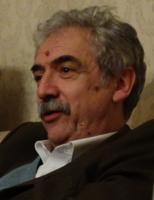
Carlo Severi is Directeur d’études at the École des Hautes Etudes en Sciences Sociales and directeur de recherche au CNRS. A member of the Laboratoire d’anthropologie sociale of the Collège de France since 1985, he has been a Getty Scholar at the Getty Institute for the History of Art and the Humanities in Los Angeles (1994-95) and a Fellow of the Wissenschaftskolleg in Berlin (2002-2003).
In 2012-13, he has been elected to a Visiting Fellowship at King’s College, Cambridge. Among his books: Naven or the Other Self, New York, Brill 1998 (with M.Houseman) L’image rituelle, Paris, L’Herne, 2014 (with Carlos Faust) and The Chimera Principle – An Anthropology of Memory and Imagination, Chicago, Hau Books/Chicago University Press, 2015
- Title
- Visual relevance and the representation of knowledge: a Papua-New Guinea case study
- Web Site
Gail Patricelli
- Biographical Note
-
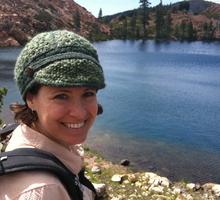
Gail Patricelli is a Professor and Chancellor’s Fellow in the Department of Evolution and Ecology at the University of California, Davis. She received her Bachelor’s degree in Biology and Art from Whitman College and PhD from the University of Maryland, and was a postdoctoral fellow at the Cornell University Lab of Ornithology. Dr. Patricelli and members of her lab study bioacoustics, breeding behaviors, and the impacts of human activities on birds. She has been a pioneer in integrating robotics into the study of animal behavior, including studies of courtship interactions in satin bowerbirds and greater sage-grouse using robotic females.
Current research in Dr. Patricelli’s lab combines experiments with robotic females, microphone arrays, and remote telemetry to address how foraging ecology relates to courtship behaviors in sage-grouse. Dr. Patricelli and her students have also examined the impacts of noise from vehicle traffic and energy development on sage-grouse, and have played an active role in translating research results into recommendations for more effective conservation planning
- Title
- The 'art' of bowerbirds: An evolving collaboration between males and females
- Web Site
Richard Prum
- Biographical Note
-
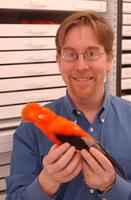
Richard Prum is an evolutionary ornithologist with broad interests in avian biology. He has done research on diverse topics, including avian phylogenetics, behavioral evolution, feather evolution and development, sexual selection and mate choice, sexual conflict, aesthetic evolution, avian color vision, structural color, carotenoid pigmentation, evolution of avian plumage coloration, historical biogeography, avian mimicry, and the theropod dinosaur origin of birds. He has conducted field work throughout the Neotropics and in Madagascar, and has studied fossil theropods in China. At Yale, he's the Curator of Ornithology and Head Curator of Vertebrate Zoology in the Yale Peabody Museum of Natural History. He's the Director of Franke Program in Science and the Humanities, which is a new initiative at Yale that aims to foster communication, mutual understanding, collaborative research and teaching among diverse scientific and humanistic disciplines.
- Title
- Coevolutionary Aesthetics: From Warblers to Warhol
- Web Site
Helmut Leder
- Biographical Note
-
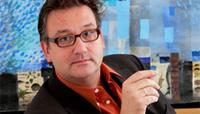
Since 2004 Professor of Cognitive Psychology and Head of the Department of Psychological Basic Research and Research Methods at the University of Vienna. He is Head of the Research Focus “Perceptual Aesthetics“ (Empirical Visual Aesthetics), and he is also Deputy Head of the interdisciplinary Cognitive Sciences Research Platform at the University of Vienna. He was a visiting Researcher at the University of Stirling, at ATR Japan, USC, UCSD, at Languages of Emotion-Cluster FU-Berlin, and Queens College, CUNY, Swinburne College, Melbourne. Research. His main fields of research are aesthetics, psychology of the arts (Leder et al., 2004, BJoP, see also Leder & Nadal, 2014, also BJoP), design, and face perception. For his research in empirical aesthetics he was awarded the Berlyne-Award of the American Psychological Association in 2004, and the Baumgarten-Award of IAEA in 2002. He was an officer for ESCOP and IAEA, is on the editorial boards of Empirical Studies of the Arts, and PACA, he is Associate Editor of the BJoP. He is a founding member of Global Institute of Advanced Studies at NYU. Since 2014 he is President of the International Association of Empirical Aesthetics.Appreciation of art and beauty! What components are involved?
- Title
- Psychology of the arts: when perception meets emotion and cognition